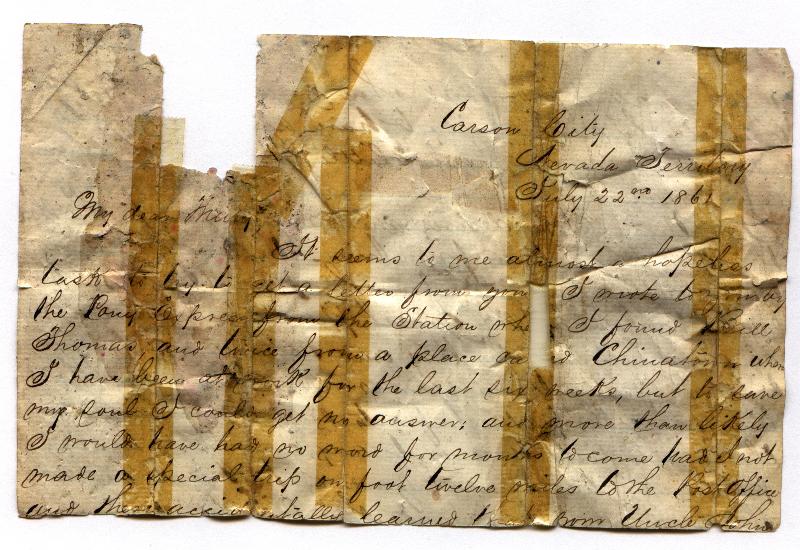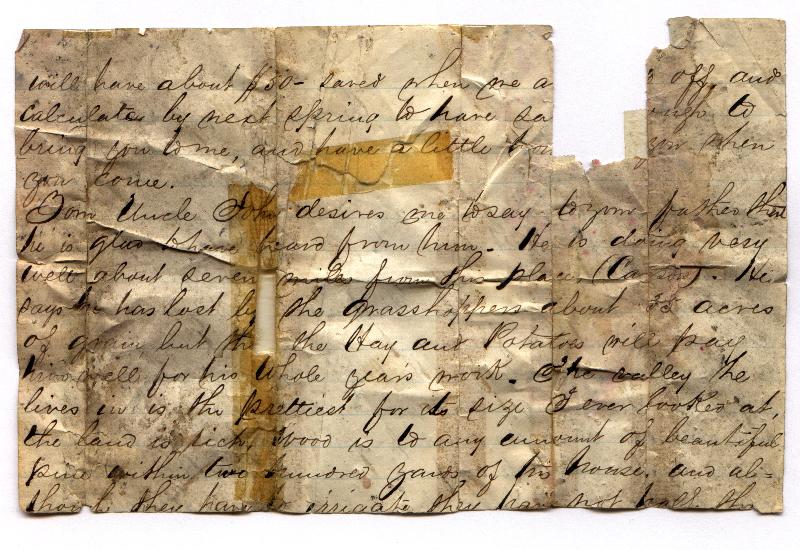THOMAS FLAVEL


Flavel (Flavell) is a name of Irish origin. It means "red-valour". The name is that of a family of the Ui Fiachrach who were originally seated at Loch Glinne, in the parish of Crossmolina, County Mayo; but were driven from there by the English and they settled at Finghid (now Finned) in Easkey Parish, County Sligo. If Thomas Flavel's family was Catholic as family history suggests, they may have been caught up in the Protestant-Catholic conflict as County Sligo is near the border of Northern Ireland. However, family tradition has it that the family came from Dublin which is located on the opposite side of the country. The first recorded appearance of Thomas Flavel is in Toledo, Ohio (originally called Port Lawrence) in 1855 where his age is given as 26 when he joined the army. Between 1829 and 1855, nothing is known of his life. Family tradition again says that he ran away from home to escape a life in the Catholic ministry that his parents had planned for him. It is not known if he ran away from home in Ireland and came to America or if he was already living here when he did run away. This incident would suggest that his family was wealthy enough to provide some kind of formal religious training for him. He may have come to the United States during the 1840's or 1850's - the time of the great potato famine in Ireland when thousands of Irish came to America. With Toledo, Ohio located on one of the Great Lakes, Thomas may have disembarked at New York City as it was the gateway to the Great Lakes inland passage through America. There was a Thomas Flavell who declared his intention to become a citizen in Philadelphia in 1851, but he stated his age as 25 - a different Thomas Flavel. Research of immigration and passenger lists for this time period in all of the East coast port cities has turned up several "Flavel" families, except ours. Census records for the same states and time periods have come up empty-handed. The 1850 United States census return for Toledo, Lucas County does not list any Flavels, so Thomas had not left Ireland by that time, or was living elsewhere in the U.S. It is possible he may have been in Toledo and just not counted. There is a family currently living in Toledo by the name of Flavell, but correspondence with them reveals there ancestors came from England by way of Canada. On June 12, 1855, Thomas Flavel was enlisted by a Captain Hatch at Port Lawrence (now Toledo), Ohio into "G" Company of the 2nd Dragoons for a term of 5 years. Dragoons were similar to cavalry. He was one of 402 enlisted men in this company. He gave his age as 26, his birthplace as Ireland and his occupation as "teacher". That might tie in with the fact that he had received some kind of advanced formal training somewhere. His physical description is also given: blue eyes, brown hair and a fair complexion. He was 5 feet 7 1/2 inches tall. The next that is known about Thomas Flavel is July 8, 1858, when, as part of Johnston's Army, he establishes at Camp Floyd, Utah. That leaves about a 3 year gap in his life. Johnston's Army left from Fort Leavenworth, Kansas some time in 1857 and wintered near Fort Bridger, Wyoming. Part of Johnston's Army had previously spent some time in Texas on assignment. Whether or not "G" Company was part of that detachment is not known. Thomas Flavels future wife, Mary Jones, had been living in Spanish Fork, Utah since the Fall of 1857. Sometime after July 8, 1858 she went to live with a friend, a Mrs. Mary Morgan, at Camp Floyd. Captain Albert Tracy states in his diary (p. 42) that while he was. stationed at Camp Floyd he went to visit someone and found two Welsh women there, but he did not mention any names. Mary Jones was from Wales. She subsequently met and married Thomas Flavel who was a bookkeeper in the army. This would substantiate his occupation as teacher and he did have beautiful penmanship. Their child, whom they named William, was born at Camp Floyd on February 12, 1860. The marriage then should have taken place sometime between July 8, 1858 and May 1859. There is no mention in Kirk Anderson's newspaper the Valley Tan of any such marriage or birth at Camp Floyd (available on microfilm at BYU Library). Mary and Thomas would have known each other a little less than a year before they were married. The Spanish Fork Cemetary Record indicated that the child William Flavel was born at Fairfield, Utah, which was located just across the street from Camp Floyd. There is no record of this marriage in the Spanish Fork Ward records, which was Mary's home ward and the nearest Mormon settlement to Camp Floyd, except for Fairfield and Cedar Fort. It is possible that Thomas and Mary were married by someone in the army at Camp Floyd. A Catholic Chaplain, Peter DiSmith had joined Johnston's Army on May 31, 1858 and it is possible he could have performed the marriage even though Mary was a fairly recent Mormon convert. There are no Flavels listed in the 1860 United States Census for Cedar County, Utah which included Cedar Fort and Fairfield. However there is no listing for Camp Floyd either. Possibly military installations were not counted in the census. The Jones family is listed in the same census for Spanish Fork, but Mary is not listed with the Family. She does show up in the 1870 Census at Spanish Fork as the head of a household of 2 (herself and her son William). The family history says that before the baby (William) was a year old (some time before February 12, 1861) Thomas' duties took him to Nevada. These most likely were not military duties because Thomas was discharged from the army on June 12, 1860. Between then and the time he left for Nevada it is not known if he stayed at Camp Floyd/Fairfield or if he moved his family to Spanish Fork to be closer to his wife's parents. Again the family history states that "he was not very well known in that community" but he must have at least visited there. For some reason Thomas asked his superior officer (Capt. of 2nd Dragoons Jno. Buford) for a letter of reccomendation. This letter is dated August 20, 1860 (2 months after his discharge) It is addressed to a Campt. J. T. Turnley, Ass't Quartermaster, U.S. Army. Both Buford and Turnley had accounts in the Camp Floyd Account book, but no record has been found for Thomas Flavel there. On July 22, 1861, Thomas wrote a letter to his wife from Carson City, Nevada Territory. The letter indicates that since the first part of June ("the last 6 weeks") he had been working at a place called Chinatown (name changed to Dayton November 3, 1861) located about 12 miles from Carson City. He may have been working as a laborer in the gold mines there or he may have put his bookkeeping skills to work in some type of office job. He makes reference in the letter to a farm 7 miles from Carson City that his wife Mary's Uncle John owns and he goes into some detail about the crops, Apparently Thomas was working at Chinatown to save up enough money to bring his wife and son to him in Nevada. Carson City Nevada Territory July 22nd 1861 My dear Mary, It seems to me almost a hopeless task to try to get a letter from you. I wrote to you by the Pony Express from the Station whe(re) I found Bill Thomas, and twice from a place ca(lle)d Chinatown where I have been at work for the last six weeks, but to save my soul I could get no answer; and more than likely I would have had no word for months to come had I not made a special trip on foot twelve miles to the Post Office and there accidentally learned that your Uncle John ---------------------------------------------------------- will have about $50- saved when me a(nd) off and calculates by next spring to have sa(ved) (en)ough to bring you to me, and have a little (house for) you when you come. Your Uncle John desires me to say to your father that he is glad to have heard from him. He is doing very well about seven miles from this place, (Carson). He says he has lost by the grasshoppers about 35 acres of grain but tha(t) the Hay and Potatoes will pay him well for his whole year's work. The valley he lives in is the prettiest for its size I ever looked at, the land is rich, wood is to any amount of beautiful pine within two hundred yards of his house, and al though they have to irrigate they have not half the THOMAS FLAVEL
That is the last he is heard from. Family tradition says that he drowned while crossing a river. Chinatown was located on the north bank of the Carson River where it meets with a stream. The river is about 60 feet wide and 3 to 4 feet deep. There were 10 to 12 mills located on the river. The 1860 census for that part of Nevada shows there were 68 people living in Chinatown. Thomas could have been there any time after August of 1860. There were 651 Irish in all of Nevada and 3 soldiers had drowned. Of course Thomas Flavel was not one of those as he was still alive in July of 1861. The Catholic Diocese of Reno has no records for that time and place. The nearest Catholic Church at Virginia City has no records for that time period either. In the Nevada Directory for 1862 there is no listing for a Thomas Flavel (or a John Jones either). He was either dead, moved away or not counted. Nevada didn't centralize their records until 1911. The county in which Chinatown (Dayton) is located didn't start to keep records until 1887. The only newspaper that might have carried news of a drowning was not founded until April 16, 1864 - probably after Thomas" death. There is a cemetary in Dayton that was in existence at least by 1863 if not sooner, but preliminary investigation has not shown any Flavel gravesite. If he did drown, it may have been in the spring run-off of 1862 Mary Jones Flavel did not file for a pension based on her husband's military record. Family tradition says Thomas Flavel had a brother named George and a sister named Maggie. There is a George Flavel who settled in Astoria, Oregon about 1848. And there are Flavel families in Portland with Irish ancestry.
utahdlarsen@sisna.com
10890 Bohm Place
Sandy, UT 84094
United States